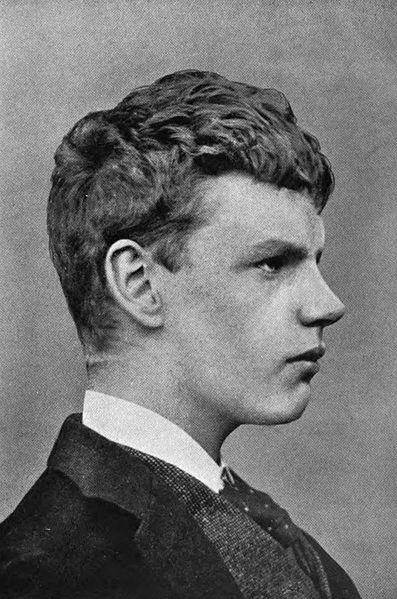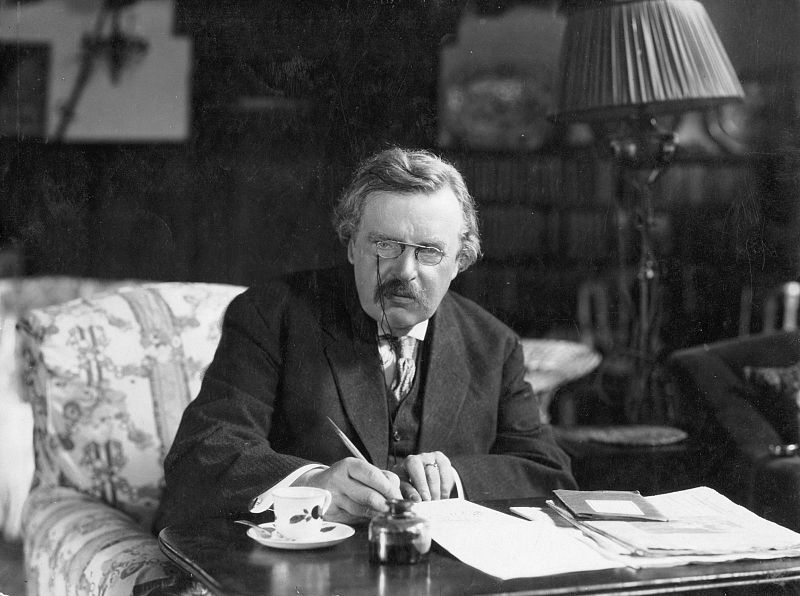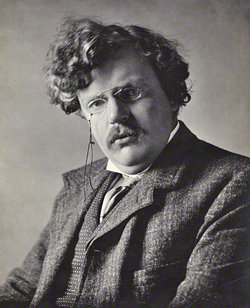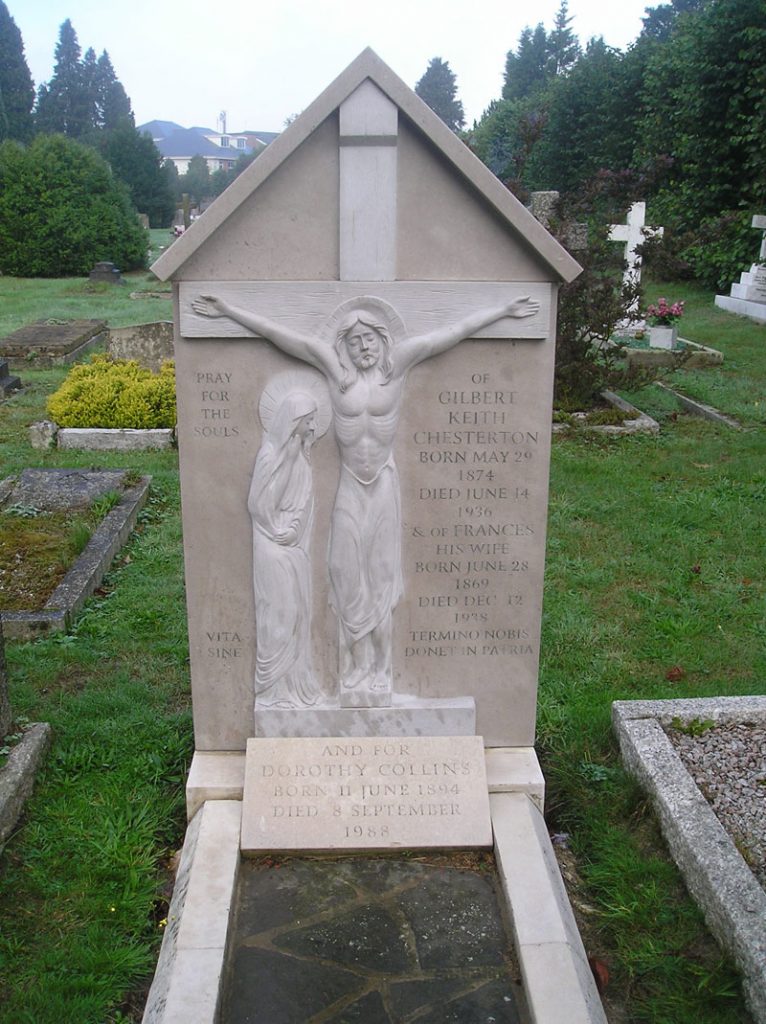Gilbert Keith GK Chesterton KC*SG (29 May 1874 – 14 June 1936) was an English writer, philosopher, lay theologian, and literary and art critic. He has been referred to as the “prince of paradox”. Time magazine observed of his writing style: “Whenever possible Chesterton made his points with popular sayings, proverbs, allegories—first carefully turning them inside out.”
GK Chesterton: Early Life
Chesterton was born in Campden Hill in Kensington, London, the son of Marie Louise, née Grosjean, and Edward Chesterton (1841–1922).

G. K. Chesterton was baptised at the age of one month into the Church of England, though his family themselves were irregularly practising Unitarians. According to his autobiography, as a young man he became fascinated with the occult and, along with his brother Cecil, experimented with Ouija boards.
Chesterton was educated at St Paul’s School, then attended the Slade School of Art to become an illustrator. The Slade is a department of University College London, where Chesterton also took classes in literature, but did not complete a degree in either subject.
Chesterton married Frances Blogg in 1901; the marriage lasted the rest of his life. Chesterton credited Frances with leading him back to Anglicanism, though he later considered Anglicanism to be a “pale imitation”. He entered full communion with the Catholic Church in 1922. The couple were unable to have children.
Chesterton Career
In September 1895 Chesterton began working for the London publisher Redway, where he remained for just over a year. In October 1896 he moved to the publishing house T. Fisher Unwin, where he remained until 1902.
During this period he also undertook his first journalistic work, as a freelance art and literary critic. In 1902 the Daily News gave him a weekly opinion column, followed in 1905 by a weekly column in The Illustrated London News, for which he continued to write for the next thirty years.

Early on Chesterton showed a great interest in and talent for art. He had planned to become an artist, and his writing shows a vision that clothed abstract ideas in concrete and memorable images. Even his fiction contained carefully concealed parables. Father Brown is perpetually correcting the incorrect vision of the bewildered folks at the scene of the crime and wandering off at the end with the criminal to exercise his priestly role of recognition and repentance.
For example, in the story “The Flying Stars”, Father Brown entreats the character Flambeau to give up his life of crime: “There is still youth and honour and humour in you; don’t fancy they will last in that trade. Men may keep a sort of level of good, but no man has ever been able to keep on one level of evil. That road goes down and down. The kind man drinks and turns cruel; the frank man kills and lies about it. Many a man I’ve known started like you to be an honest outlaw, a merry robber of the rich, and ended stamped into slime.”
Chesterton’s writing has been seen by some analysts as combining two earlier strands in English literature. Dickens’ approach is one of these. Another is represented by Oscar Wilde and George Bernard Shaw, whom Chesterton knew well: satirists and social commentators following in the tradition of Samuel Butler, vigorously wielding paradox as a weapon against complacent acceptance of the conventional view of things.
GK Chesterton’s style and thinking were all his own, however, and his conclusions were often opposed to those of Oscar Wilde and George Bernard Shaw. In his book Heretics, Chesterton has this to say of Wilde: “The same lesson [of the pessimistic pleasure-seeker] was taught by the very powerful and very desolate philosophy of Oscar Wilde. It is the carpe diem religion; but the carpe diem religion is not the religion of happy people, but of very unhappy people. Great joy does not gather the rosebuds while it may; its eyes are fixed on the immortal rose which Dante saw.”[38] More briefly, and with a closer approximation of Wilde’s own style, he writes in Orthodoxy concerning the necessity of making symbolic sacrifices for the gift of creation: “Oscar Wilde said that sunsets were not valued because we could not pay for sunsets. But Oscar Wilde was wrong; we can pay for sunsets. We can pay for them by not being Oscar Wilde.”
Chesterton Death
GK Chesterton was a large man, standing 6 feet 4 inches and weighing around 285 lb.
His girth gave rise to an anecdote during the First World War, when a lady in London asked why he was not “out at the Front”; he replied, “If you go round to the side, you will see that I am.”

On another occasion he remarked to his friend George Bernard Shaw, “To look at you, anyone would think a famine had struck England.” Shaw retorted, “To look at you, anyone would think you had caused it.”
PG Wodehouse once described a very loud crash as “a sound like GK Chesterton falling onto a sheet of tin”.
GK Chesterton died of congestive heart failure on the morning of 14 June 1936, at his home in Beaconsfield, Buckinghamshire. His last known words were a greeting spoken to his wife.
The sermon at Chesterton’s Requiem Mass in Westminster Cathedral, London, was delivered by Ronald Knox on 27 June 1936. Knox said, “All of this generation has grown up under Chesterton’s influence so completely that we do not even know when we are thinking Chesterton.” He is buried in Beaconsfield in the Catholic Cemetery.

Near the end of Chesterton’s life, Pope Pius XI invested him as Knight Commander with Star of the Papal Order of St. Gregory the Great (KC*SG). The Chesterton Society has proposed that he be beatified. He is remembered liturgically on 13 June by the Episcopal Church, with a provisional feast day as adopted at the 2009 General Convention.
